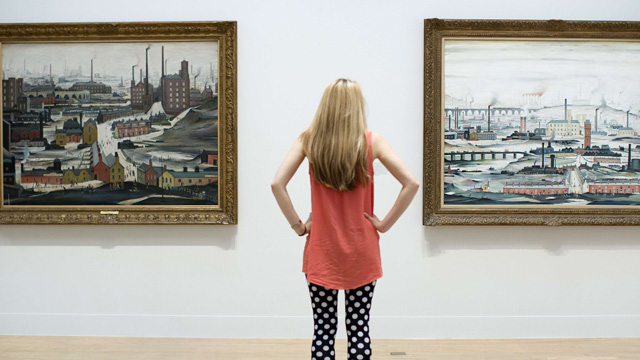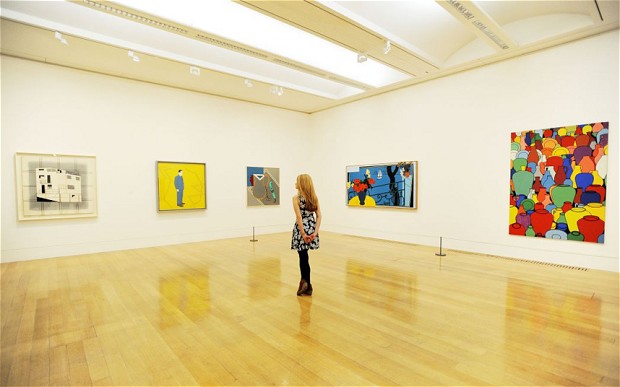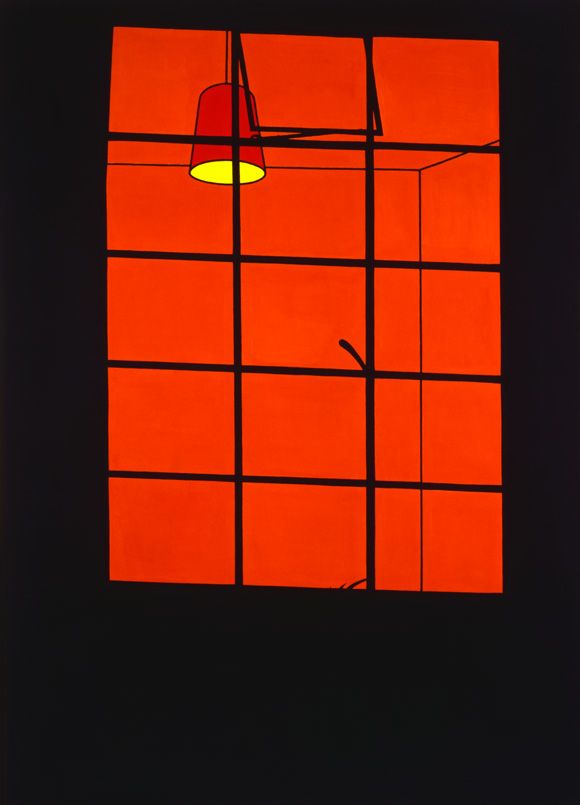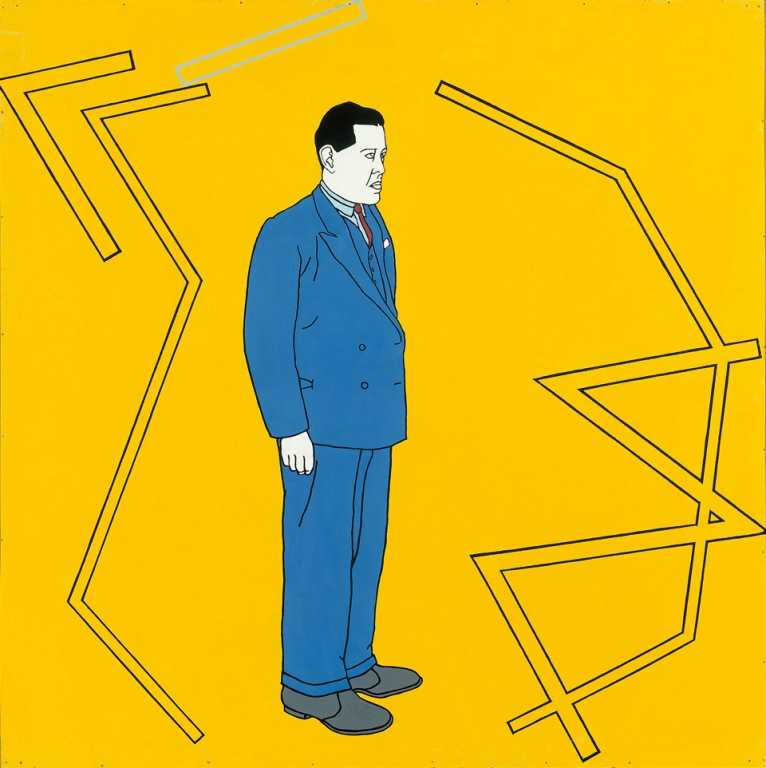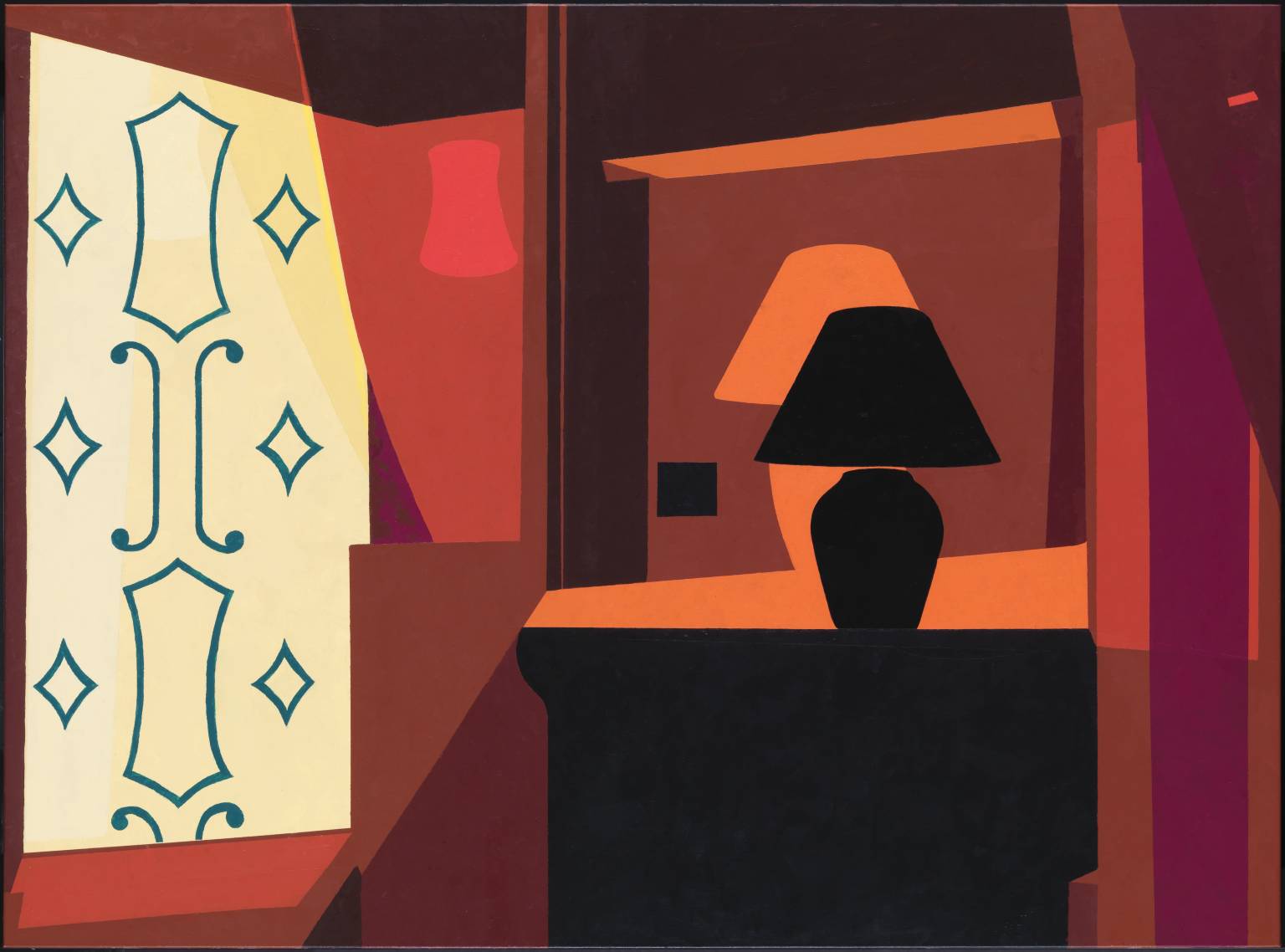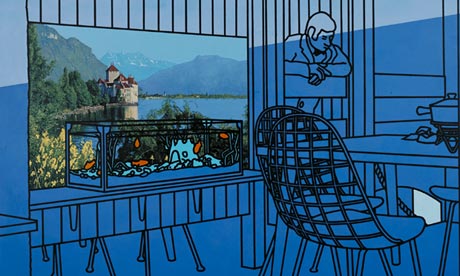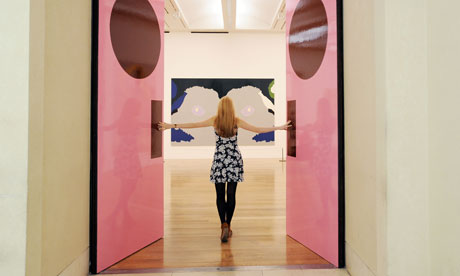
The Hume and Caulfield shows are in fact paired together by the museum, as two British artists of different generations both engaging with the medium of paint and who are amazing colorists. Drawing inspiration from artists such as Ellsworth Kelly, Donald Judd, Klimt and the great Old Master colorist Vermeer, Hume made his own name as one of the new generation of Young British Artists with his paintings of doors. For the exhibition entrance, he makes reference to these paintings and in fact made functioning doors for the first time!
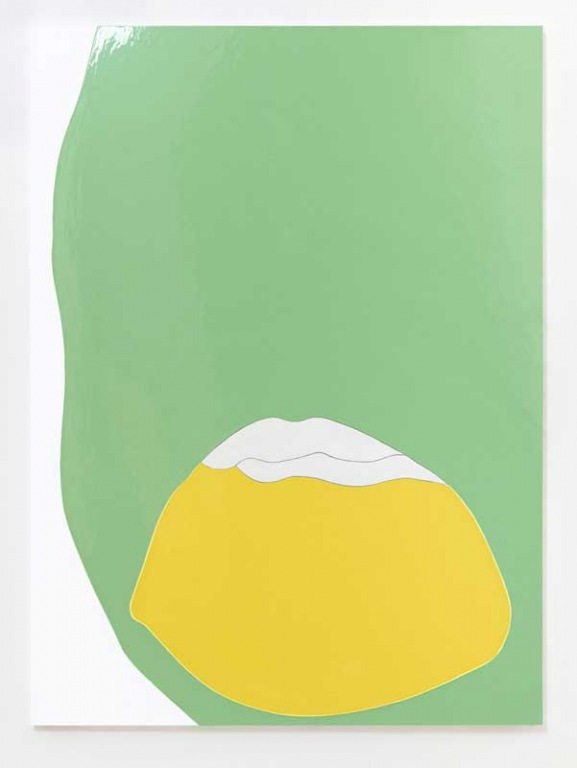
This is a nice show bringing together Hume’s well-known works alongside recent paintings seen in the UK for the first time, all making up about 24 works charting Hume’s career since he exhibited his hospital doors paintings at the infamous “Freeze” exhibition organized by Damien Hirst in 1988. Among the works been shown for the first time in the UK is a portrait of Angela Merkel titled “Anxiety and the Horse” 2011 that Hume completed in his home in upstate New York.
Patrick Caulfield is from an older generation than Hume. He first came to prominence in the 1960s and continued painting until his death in 2005. Similar to Hume, Caulfield’s career took off after an important exhibition. Caulfield’s was in 1964, the first of The New Generation exhibitions at the Whitechapel Gallery, where David Hockney and Bridget Riley were also included. He never painted figures, expect for his iconic 1963 portrait of Juan Gris, the Surrealist painter, which is included in the show.
Caulfield looked up to the previous generation, to artists like Fernand Leger, Edward Hopper, and Stuart Davis who used lot of color. Caulfield was interested in the way these artists used space and light to capture a place and time. Caulfield's skills as a colorist is evident as soon as one walks into the exhibition room: you get taken up by the bright lights, synthetic colors and shiny surfaces of the modern world. We see brilliant examples of Caulfield’s grand still lives and examinations of British culture. For example, he makes references to the 1970s custom of having continental breakfast or wallpaper in the living room with photographed European landscapes - or the late 90s when every bottle of lager had a wedge of lime. As the exhibition curator Clarrie Wallis says, “He is capturing the character of modern life.”
Caulfield was one of the most admired artists of his generation: figurative painters admired him for his sophisticated draftsmanship, abstract artists for his control and inventive use of color, minimalists for his austerity and conceptual artists for his intellectual rigor. If Tate Britain show is not enough dose of Caulfield for you, Alan Cristea has put on a show of the artist's silk screen prints and they are for sale too.


